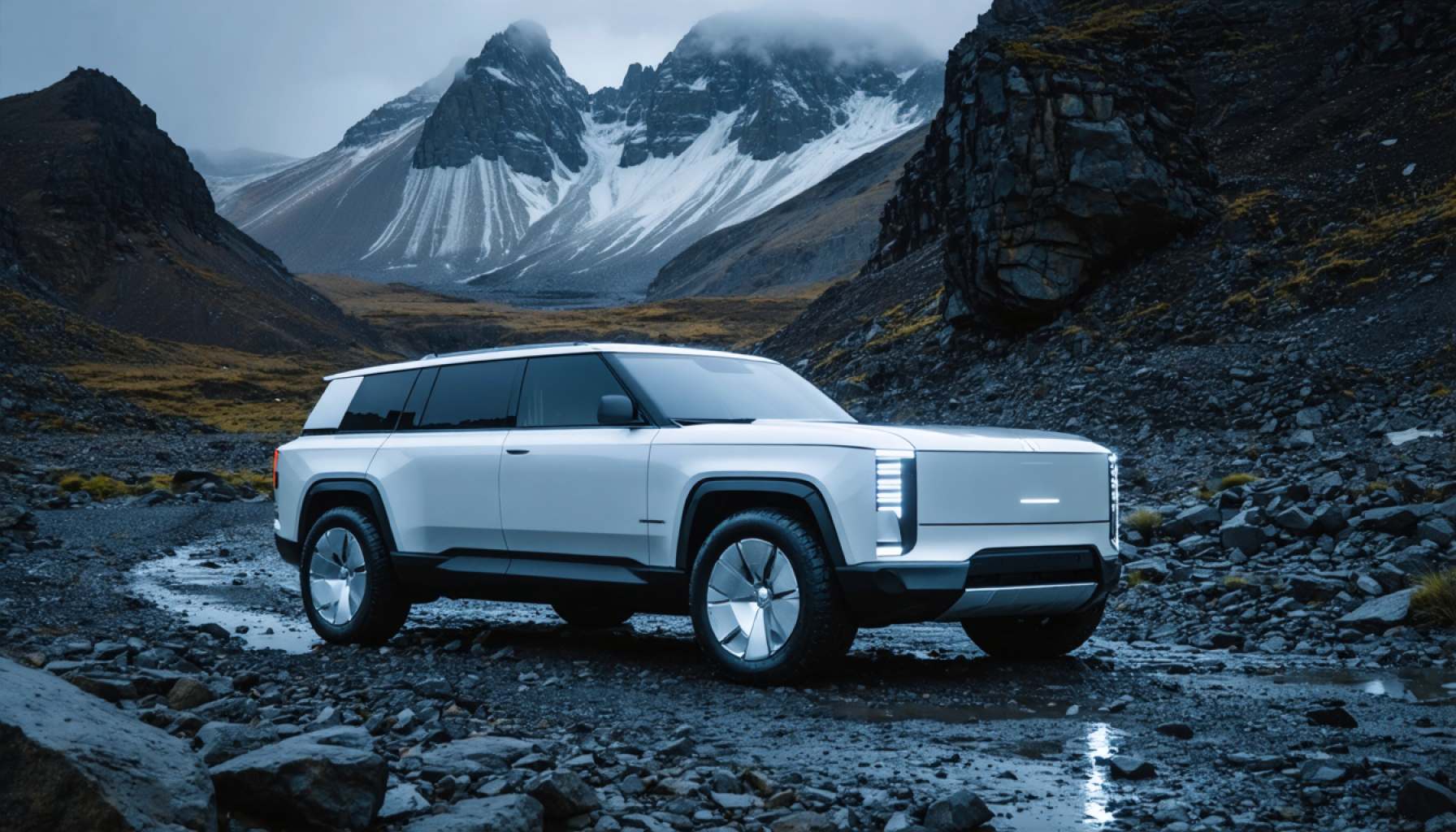- Rivian achieved its first “positive gross profit” in Q4 2024, signaling effective cost-cutting measures.
- The company generated $1.7 billion in revenue for the quarter, with a $170 million gross profit, though it still faced a $743 million net loss.
- In 2024, Rivian reported $4.5 billion in revenue and delivered over 51,000 vehicles.
- Sales are expected to decline in 2025 due to shifting policies and demand fluctuations, yet Rivian aims for a “modest profit.”
- Rivian is expanding its market by offering delivery vans to commercial fleet owners and launching the R1 vehicle for off-road use.
- Tensions arise from potential tariffs and reduced EV incentives, which may increase costs.
- A $5.8 billion partnership with Volkswagen boosts Rivian’s drive for future innovation in the EV sector.
Rivian, the electric vehicle (EV) pioneer shaping tomorrow’s roads, recently jolted the market with groundbreaking news—its first taste of profitability amidst a backdrop of formidable challenges. Emerging from the shadows, Rivian celebrated a significant triumph by achieving a “positive gross profit” in the final quarter of 2024, an indicator that the company’s relentless pursuit of cost-cutting innovations is garnering dividends.
Against the canvas of $1.7 billion in revenue for the quarter, Rivian’s financial paints a dual-toned picture. The company brightened figures with a $170 million gross profit, starkly contrasting a looming net loss of $743 million. Despite remaining in the red, these numbers mark a leap forward from the $1.5 billion loss witnessed in the same period of the prior year.
Rivian carved out $4.5 billion in revenue throughout 2024, dispersing over 51,000 vehicles to eager customers. But the roadway narrows in 2025, as the company braces for a dip in sales, navigating through an environment headlined by shifting policies and wavering demand. Despite predictions of flattened sales, the EV maker remains steadfast about tracking a “modest profit” for the year, reminiscent of the resolve echoing in its boardroom.
An electric hum of optimism charges ahead with Rivian offering its iconic delivery vans to commercial fleet owners while launching the specialized R1 vehicle for adventurous terrains. Yet, storm clouds gather as looming tariffs threaten to escalate costs, compounded by withdrawn electric vehicle incentives.
Rivian’s ambitions are bolstered by a powerful $5.8 billion alliance with Volkswagen, setting an electrifying course for future innovations. The narrative here unfolds in the tension between immediate fiscal gains and trials on the horizon—a tale that exemplifies both the volatility and promise of redefining transportation as we know it.
Can Rivian Stand Out Among EV Giants? Explore Its Ambitious Journey and Future Prospects
How-To Steps & Life Hacks: Maximizing Your EV Experience with Rivian
1. Charging Efficiently: Utilize Rivian’s integrated navigation system to locate nearby charging stations. To reduce downtime, plan charging during extended rest periods on long journeys.
2. Utilize Over-The-Air Updates: Ensure your Rivian vehicle benefits from the latest features and improvements by enabling automatic over-the-air software updates.
3. Optimize Driving Modes: Explore Rivian’s customizable driving modes to enhance performance and efficiency depending on road conditions and personal preference.
4. Eco-Friendly Maintenance: Regularly maintain your Rivian vehicle using sustainable products to complement its eco-friendly mission.
Real-World Use Cases
Rivian’s vehicles shine in various scenarios:
– Delivery Fleets: Rivian’s electric vans are designed for efficiency and sustainability, offering green solutions for companies like Amazon.
– Adventure Seekers: The R1 series provides robust, all-terrain capabilities for adventurous expeditions, featuring extensive range and adaptable driving dynamics.
Market Forecasts & Industry Trends
The demand for electric vehicles is poised to grow, with projections indicating that EVs will constitute over 30% of global new vehicle sales by 2030. Rivian’s focus on both the consumer market and commercial sector positions it well to capitalize on this trend.
Reviews & Comparisons
Rivian’s R1T and R1S have received positive reviews for their innovative design, impressive off-road capabilities, and unique features like the “Gear Tunnel.” Compared to competitors like Tesla’s Cybertruck and Ford’s F-150 Lightning, Rivian distinguishes itself with premium build quality and range.
Controversies & Limitations
Rivian faces potential challenges:
– Supply Chain Issues: Continued global supply chain constraints could affect production timelines.
– Regulatory Pressures: Changes in government policies or tariffs could impact pricing and market accessibility.
Features, Specs & Pricing
– Rivian R1T: Starting price around $67,500 with a range of 314 miles, 0-60 mph in 3 seconds, and advanced driver-assistance systems.
– Rivian R1S: Starting niche at $70,000, offers similar range and performance with seven-passenger seating.
Security & Sustainability
Rivian places a high emphasis on security with robust over-the-air software updates and commitment to end-to-end encryption. The company also focuses on sustainability by integrating recycled materials in its vehicles and investing in renewable energy.
Insights & Predictions
Rivian’s partnership with Volkswagen positions it lucratively for technological advancements. Expect revolutionary vehicle platforms and a strong presence in markets supporting sustainable transportation.
Pros & Cons Overview
Pros:
– Strong brand appeal and innovative design.
– Diversified product range catering to both consumers and businesses.
– Substantial backing from major investors and partnerships.
Cons:
– High initial pricing, potentially limiting accessibility.
– Dependence on fluctuating policy incentives and tariffs.
Actionable Recommendations
1. Monitor Policy Developments: Stay informed about governmental incentives and tariffs that may impact EV pricing.
2. Prepare for Market Fluctuations: Recognize potential delays in delivery, especially with high-demand models.
3. Explore Financing Options: Look into leasing options or governmental grants that might make a Rivian vehicle more affordable.
For further information, consider visiting Rivian’s Website for the latest updates and product announcements.



















